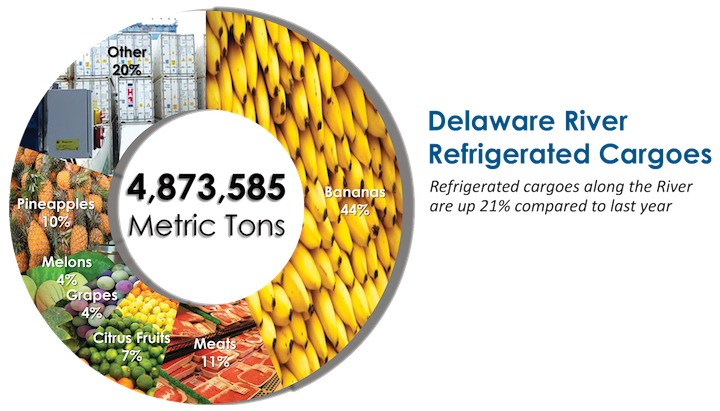PhilaPort achieved a 7% increase in container volumes in 2020. This placed The Port of Philadelphia as the fastest growing container port on the U.S. East Coast. These impressive cargo levels continue a decade-long trend of prosperity for the Port, which has realized 10% compound annual growth.
The worldwide COVID pandemic has created unprecedented difficulties for global supply chains. However, certain market sectors, such as perishables and forest products, have surged.
“We are working daily to make improvements. Clearly, shippers are noticing,” said Jeff Theobald, PhilaPort Executive Director and CEO. “Our longshoremen and our terminal operator, HOLT, have done an excellent job staying safe and moving cargo.”

Additionally, PhilaPort saw a five-year historic high in forest product cargoes. For 2020, the Port was up 14%, and for the month of December the Port saw an increase of 61% vs. December 2019. For breakbulk alone, PhilaPort terminals handled 928,000 tons. Containerized forest products were estimated to be 20,000 units.
Piers 78-80 handle all kinds of forest products, including paper, pulp and lumber originating in Northern Europe. “This port handles almost 1 million tons of forest products in a normal year. But COVID and new modes of consumer behavior have resulted in even greater amounts of forest products entering our Port,” said Penn Warehousing and Distribution’s Tom Mutz. Penn Warehousing and Distribution operates PhilaPort’s Forest Products Center, which includes Piers 78-80.
Forest products cargo segments include packaging materials, lumber for home improvement projects, printing paper, healthcare and safety products, and personal hygiene goods.
“We have worked hard to keep our workers safe, and to keep the flow of these essential goods moving,” stated Bob Palaima, President of Delaware River Stevedores, operator of the Port’s Tioga Marine Terminal. “The fact that PhilaPort built new purpose-built warehousing for forest products certainly helped our operation,” Palaima concluded.









